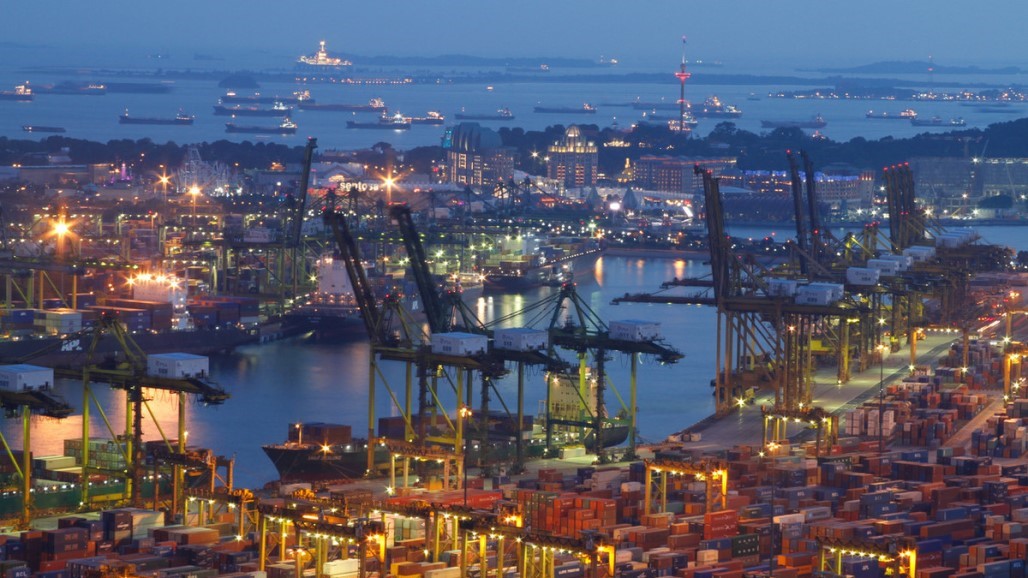
Strong global demand for electronics, fewer supply disruptions, and high commodity prices boosted exports in Southeast Asia last year. Photo credit: ADB.
Economic gains continue despite tapering by the US Central Bank in November in response to rising inflation and the Russian invasion of Ukraine.
The trade-dependent economies of Southeast Asia are forecast to grow collectively by 4.9% this year and 5.2% in 2023, buoyed up by strong domestic demand and export expansion.
The Asian Development Bank (ADB) recently released its annual flagship economic publication, Asian Development Outlook (ADO) 2022. The report’s economic forecasts take into account uncertainties stemming from the Russian invasion of Ukraine, the continuing coronavirus disease (COVID-19) pandemic, and tightening by the United States Federal Reserve. It expects developing Asia’s economies to grow 5.2% this year and 5.3% in 2023.
“Economies in developing Asia are starting to find their footing as they slowly emerge from the worst of the COVID-19 pandemic,” says ADB Chief Economist Albert Park. “However, geopolitical uncertainty and new COVID-19 outbreaks and virus variants could derail this momentum. Governments in the region will need to remain vigilant and prepared to take steps to counter these risks. That includes making sure as many people as possible are fully vaccinated against COVID-19. Monetary authorities should also continue to monitor their inflation situation closely and not fall behind the curve.”
The ADB report also reiterated the importance of tax reforms to support a strong recovery and sustainable growth.
“Economies in Asia and the Pacific will face a growing need for effective public spending in areas like health, education, and the environment,” says Park. “Policy reforms that improve tax collection and increase revenue can help the region achieve sustainable and inclusive economic growth. Such reforms must be carried out on a case-by-case basis, and in ways that don’t stifle growth or create undue burdens on taxpayers.”
Sustained recovery
In Southeast Asia, the report notes that economic activity rebounded, with “particularly large gains in the Philippines,” as mobility restrictions were eased and improved.
The strong global demand for electronics and fewer supply disruptions last year boosted exports in Southeast Asian countries, notably in Malaysia and Viet Nam. “Rising commodity prices also buoyed exports of oil from Indonesia, copper from the Philippines, iron from Thailand, and palm oil from Malaysia,” the report says.
Inflation in developing Asia in 2021 was lower than in other parts of the world. In December, the inflation rate was 2.4% in Southeast Asia. The report says two factors mitigated inflationary pressures. One is that most economies were below their pre-pandemic trend and substantial slack remains. Another is the resilience of supply chains.
Economic gains continue despite tapering by the US Central Bank in November in response to rising inflation and the Russian invasion of Ukraine. While other Asian markets weakened, equity markets in Southeast Asia gained 1.6% in the last quarter of 2021 over the third quarter.
According to a CNBC report, analysts from Wall Street banks expect investors to flock to Southeast Asia, which is “relatively insulated from geopolitical tensions” in Europe. They see Indonesia as the hottest market, followed by Viet Nam and Singapore.
Domestic resource mobilization
Available policy reforms, strategically applied, could enable economies in developing Asia to boost tax revenue by as much as 4% of gross domestic product (GDP) on average, according to the ADB report.
In Southeast Asia, it notes that “tax effort is low and the potential to increase taxes is correspondingly great… particularly in Malaysia and Thailand.”
The report cited ways to raise the tax revenue needed to help ensure sustainable growth. These include putting a price on pollution, making it easier for small businesses to register, and taxing digital goods and services more effectively.
As of 2020, micro, small, and medium-sized businesses accounted for 98% of all enterprises and 41% of GDP in Southeast Asia. So, making it easier to register a business and lowering transaction costs could bring more small businesses into the formal economy, enhancing tax collection.
This article was first published by BIMP-EAGA on 13 April 2022.
A webinar on the economic outlook for Southeast Asia will be held on 28 April. It will feature economists from ADB, ERIA, and Natixis. Register.

BIMP-EAGA
The Brunei Darussalam–Indonesia–Malaysia–Philippines East ASEAN Growth Area, or BIMP-EAGA, is a cooperation initiative established in 1994 to spur development in remote and less developed areas in the four participating Southeast Asian countries.


